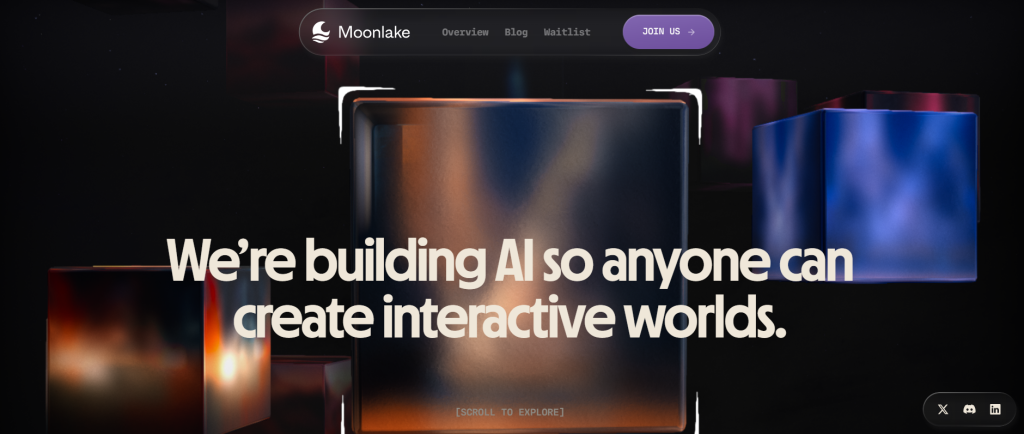Moonlake AI Raises $28 Million in Seed Funding to Redefine Intelligent Infrastructure
October 8, 2025
byFenoms Start-Ups

Moonlake AI has raised $28 million in Seed funding, marking a pivotal moment for the company as it builds the next generation of adaptive, intelligence-driven infrastructure. The round saw participation from AIX Ventures, Threshold Ventures, NVIDIA Ventures, and a powerhouse group of AI leaders and investors including Jeff Dean, Steve Chen, Naval Ravikant, Ian Goodfellow, and Guillermo Rauch.
Founded by Fan-Yun Sun and Sharon Lee, Moonlake AI is tackling one of the most urgent problems in the AI ecosystem today: how to scale intelligent systems efficiently, safely, and sustainably.
Rethinking How AI Scales
Moonlake AI’s vision is centered on optimizing AI infrastructure for adaptive learning and scalable intelligence. Instead of focusing purely on model expansion, Moonlake is developing dynamic systems that continuously learn and refine themselves across environments.
This approach challenges the current industry trend of endlessly increasing model sizes. The company’s founders believe that the next breakthrough in AI will not come from more parameters or data but from intelligent adaptability - creating AI systems capable of contextual learning and real-time reasoning.
Moonlake’s technology makes it possible for enterprises to deploy smarter, leaner models that use resources more efficiently and evolve autonomously over time.
The Power Behind the Round
The investor lineup behind Moonlake is remarkable. AIX Ventures and Threshold Ventures bring deep expertise in AI scaling and early-stage technology investments, while NVIDIA Ventures adds strategic alignment with the hardware backbone driving AI globally.
The inclusion of AI legends like Jeff Dean (Google DeepMind), Ian Goodfellow (inventor of GANs), and thought leaders such as Naval Ravikant amplifies the company’s credibility. These individuals have shaped how AI is built and understood, and their support signals confidence that Moonlake AI is working at the frontier of intelligent infrastructure.
Their collective involvement underscores a growing realization across the tech landscape - that the future of AI innovation lies not just in new models, but in the infrastructure that sustains them.
Breaking the Scale Myth
In a field dominated by massive foundation models, Moonlake AI is taking a contrarian but essential stance. The company believes that true intelligence doesn’t come from size - it comes from efficiency and context.
While many startups chase ever-larger models, Moonlake focuses on adaptive efficiency - systems that can make better decisions with fewer resources. This philosophy challenges the current arms race of compute spending and highlights a more sustainable, performance-driven future for AI.
Here’s where Moonlake offers a key lesson for founders and builders:
Scaling intelligently often beats scaling endlessly.
AI companies that focus on infrastructure-level efficiency will outlast those that rely on brute-force training methods. Moonlake’s strategy is a reminder that innovation in optimization can be just as powerful as breakthroughs in algorithms.
From Concept to Application
Moonlake AI’s platform is designed to power a new class of self-optimizing, multi-modal AI systems. These systems integrate reinforcement learning, causal reasoning, and contextual adaptation to enable intelligent automation across industries.
Imagine AI agents capable of:
- Reallocating compute resources dynamically to reduce costs.
- Learning from new data in real time without retraining from scratch.
- Collaborating across systems and models to improve results continuously.
This type of live intelligence could transform everything from enterprise automation to research acceleration - unlocking capabilities far beyond static generative models.
Strategic Insight: Efficiency Is the Next Frontier
One of Moonlake’s most powerful strategic moves is focusing on efficiency as a competitive advantage. As AI adoption skyrockets, so do compute costs, energy use, and operational complexity.
Moonlake’s architecture directly addresses these challenges by enabling adaptive scaling and intelligent workload management. It’s not just about doing more - it’s about doing it smarter, cheaper, and faster.
For founders, this is a pivotal takeaway: infrastructure-first thinking creates lasting defensibility. The companies that dominate the AI era will be those that make intelligence practical, not just powerful.
Industry Outlook: The Infrastructure Revolution
The timing of this raise couldn’t be better. The global AI infrastructure market is projected to surpass $500 billion by 2032, growing at a CAGR of over 22%. Enterprises are shifting from AI experimentation to full-scale deployment, yet over 60% cite infrastructure bottlenecks as their biggest challenge.
Meanwhile, investors and governments alike are prioritizing energy-efficient, explainable, and secure AI systems - the exact principles at the core of Moonlake’s technology.
As AI becomes foundational to every industry, the demand for platforms that combine performance, adaptability, and sustainability is surging. Moonlake AI is positioned to be at the heart of that transformation.
What’s Next for Moonlake AI
With $28 million in fresh capital, Moonlake will accelerate product development and expand its engineering teams focused on large-scale optimization. The company also plans to strengthen its partnerships with hardware providers and research institutions to advance its adaptive AI framework.
Expect Moonlake to play a major role in shaping the next generation of intelligent infrastructure - one where AI doesn’t just process data, but understands and evolves from it.
Moonlake AI’s success underscores a broader truth about the future of artificial intelligence: the greatest breakthroughs won’t just come from smarter models, but from smarter systems that make intelligence more accessible, efficient, and reliable.









